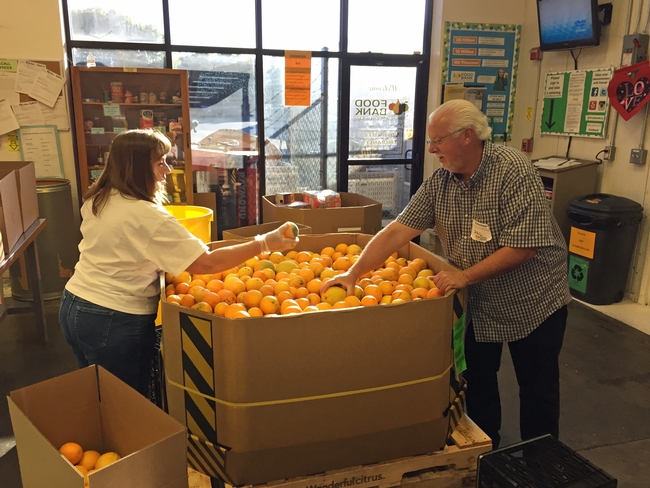New tool helps assess policies and practices
An estimated 53 million people in the U.S. turned to food banks and community programs for help putting food on the table in 2021. In recent decades, food banks have adopted policies and practices to make sure people not only have access to food but also healthy and nutritious food.
But until now, food banks have had few ways to evaluate those initiatives.
University of California, Davis, Assistant Professor of Cooperative Extension Cassandra Nguyen led a team of researchers to develop the Food Bank Health and Nutrition Assessment to address that concern. Their findings were published in the journal Public Health Nutrition.
“This tool will allow food banks to reflect on their current practices and determine whether they can adopt additional strategies to promote nutrition and health. It also serves as a benchmark, which they can use to track their progress over time,” said Nguyen, with the UC Davis Department of Nutrition.
Nutrition policy is more than what's on the shelf
Food banks face some common challenges in promoting nutrition, health and equity. While food banks could assess the nutritional quality of their inventory, Nguyen said promoting nutrition requires more than knowing the types of food on the shelf.
“Food banks can have nutrition policies that outline where they source food and which foods they prioritize when funding is available. They can also ensure that food pantry clients are either represented on advisory boards or are able to provide feedback about foods they would like to receive,” Nguyen said.
Additionally, food banks can take steps to make sure nutrition education materials and information about federal assistance programs for health and nutrition are available in languages spoken by recipients.
Partnerships with outside organizations and local farmers can also increase the variety and availability of nutritious foods. Food banks with diverse connections may also adapt better to unexpected spikes in need, such as during the COVID-19 pandemic.
The Food Bank Health and Nutrition Assessment was designed to evaluate these and additional objectives so food banks can identify areas of success as well as potential strategies they hadn't considered before.
Importance of data
“By having data from this assessment to show that some practices to promote nutrition and health may be difficult to implement, several food banks can raise their voices to advocate for policy changes,” Nguyen said.
Food banks with Feeding America and the Midwest Food Bank in four Midwestern states participated in the initial development of the Food Bank Health and Nutrition Assessment. In this small initial sample, most food banks asked food recipients about their preferences or whether diet-related diseases (for example, diabetes) were common, but few had current or former charitable food recipients on advisory boards.
The assessment is available for free through Feeding America, the largest nonprofit organization supporting the charitable food system, and online through the University of Illinois Extension. Food bank staff and partnering community-based professionals such as extension staff can use the assessment to improve promotion of nutrition and health.
Other authors include Caitlin Kownacki, Veronica Skaradzinski, Kaitlyn Streitmatter, Stephanie Acevedo and Jennifer McCaffrey with the University of Illinois at Urbana-Champaign; Stephen D. Ericson with Feeding Illinois; and Jessica E. Hager with Feeding America.
Funding for the research was supported by the Supplemental Nutrition Assistance Program-Education, or SNAP-Ed, in Illinois
